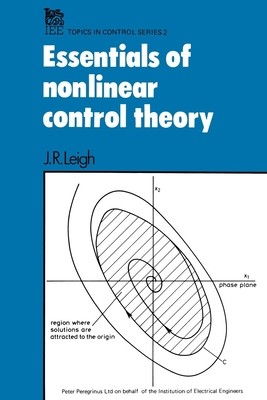
- We will send in 10–14 business days.
- Author: J R Leigh
- Publisher: Institution of Engineering & Technology
- ISBN-10: 0906048966
- ISBN-13: 9780906048962
- Format: 15.2 x 22.9 x 0.6 cm, minkšti viršeliai
- Language: English
- SAVE -10% with code: EXTRA
Reviews
Description
The book is concerned with understanding the structure of nonlinear dynamic systems within a control engineering context After a discussion of theoretical foundations, the development moves to specific techniques (describing function method, phase plane portrait, linearisation methods). The treatment then becomes oriented to qualitative analysis and maintains this emphasis to the end of the book. The broad aim is to develop methods that will allow the topology of system behaviour to be visualised. The main tools are Lyapunov methods, extending to include recent work on system decomposition. A bibliography lists both earlier seminal and recent literature to allow the reader to follow up particular aspects.
EXTRA 10 % discount with code: EXTRA
The promotion ends in 21d.15:02:28
The discount code is valid when purchasing from 10 €. Discounts do not stack.
- Author: J R Leigh
- Publisher: Institution of Engineering & Technology
- ISBN-10: 0906048966
- ISBN-13: 9780906048962
- Format: 15.2 x 22.9 x 0.6 cm, minkšti viršeliai
- Language: English English
The book is concerned with understanding the structure of nonlinear dynamic systems within a control engineering context After a discussion of theoretical foundations, the development moves to specific techniques (describing function method, phase plane portrait, linearisation methods). The treatment then becomes oriented to qualitative analysis and maintains this emphasis to the end of the book. The broad aim is to develop methods that will allow the topology of system behaviour to be visualised. The main tools are Lyapunov methods, extending to include recent work on system decomposition. A bibliography lists both earlier seminal and recent literature to allow the reader to follow up particular aspects.


Reviews